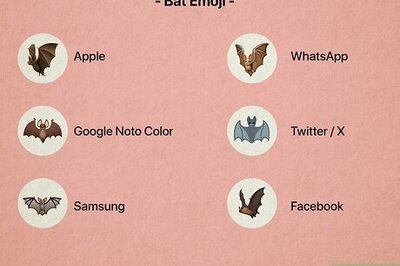
views
Multi-faceted in origin, currency, evolved with the advent of civilisation. It not only denoted monetary value, but also depicted time and evolution of any place, like the world’s smallest gold coin of the 1382 AD, which weighs about 0.034 milligrams, minted during the reign of King Harihara-II of Vijayanagara dynasty or the rare Indian currency notes like 21/2 rupees issued by the Indian Government in 1918; coins of the Victorian age and Nizam age. Imagine all of these put on display under one roof! Sounds exciting, doesn’t it? The Hyderabad Philatelic & Hobbies Society (HPHS), Hyderabad has organised a three-day “Hyderabad Stamps, Coins & Notes Fair-2011” from July 29 to 31 at the Federation of Andhra Pradesh Chambers of Commerce and Industry (FAPCCI). Stamps, coins, match box labels, post cards, telegraphs, money orders, inland letters, anything and everything vintage and worth collecting were on display. With a strength of 200 members, HPHS is a society which consists of many internationally recognised stamp and coin collectors.Some of these collectors are even on the jury list of similar international organisations.After 2005 and 2007, this is the third fair held by the society.BK Nagpal, a member of HPHS, who specialises in stamps and coins of the Nizam era, said, “We organise such fairs to popularise and promote the hobby of stamp and currency collection.Every section of the society, including the youngsters are very much interested in these activities.” “80 dealers across India, have put their collection on display. This is going to be one common platform for coins and stamp collectors and dealers of the city to view and own rare coins,” he added. Nagpal said a lot of stamp and coin collectors specialise in a particular type of collection. “For example, they might be countrywise, like American, Italian, Switzerland or Australian,or are categorised basing on the type of stamps like flowers, railways, seashore, ships, personalities and many more,” he explained.Sundar Baherwani, president of the society, said, “A new form of stamp collection that has caught up pace is jewellery stamp collection.A lot of people are very much interested in this as they are quite unusual. There are even stamps for newspapers also.” “We have a lot of literature on the study of coins and stamps, which explains the origin and the science behind their evolution,” he added.A walk round the fair and ancient currency of not only India, but also Guatemala, Paraguay. Zaire, Lebanon, Estonia, Austria, Albania, Greece, Antigua, Burundi, Grenada will greet you. You name it, they had it. One of the largest gold coins, weighing one kilogram, minted by Australia and demonetised Indian currency notes like `5,000 or 10,000 were also on display.One very unique feature of the fair were the lead tablets of the Southern Sung Dynasty, dated 1127-1279.These were put on display by Vivekananda, a dealer from Kerela, at a re-sale value of `3,000 to 5,000 depending on the number of grams they weighed. He proudly displayed his priced possessions like coins from the times of World War II, 2,000 year old Roman age coins and coins from Travancore, dated 1741.One anna coins of the East India Company, the currencies from George IV, V, VI and VII were also on display.One and 10 rupee notes and their different prints from 1947 to 2009, very interestingly told the story of evolution of the Indian notes.Talking about stamps, every stall had stamps of various themes like festivals, historical monuments, handlooms, art forms-both performing and visual, personalities and many more. One can get startled by the fact that at this fair there were stamps of more than 17 countries which had stamps of Mahatma Gandhi. Countries like South Africa, Antigua, Burundi, Grenada, Guyana, Malta and many other countries had printed different facets of Mahatma Gandhi.This stamps, coins and notes fair will conclude on July 31.


















Comments
0 comment